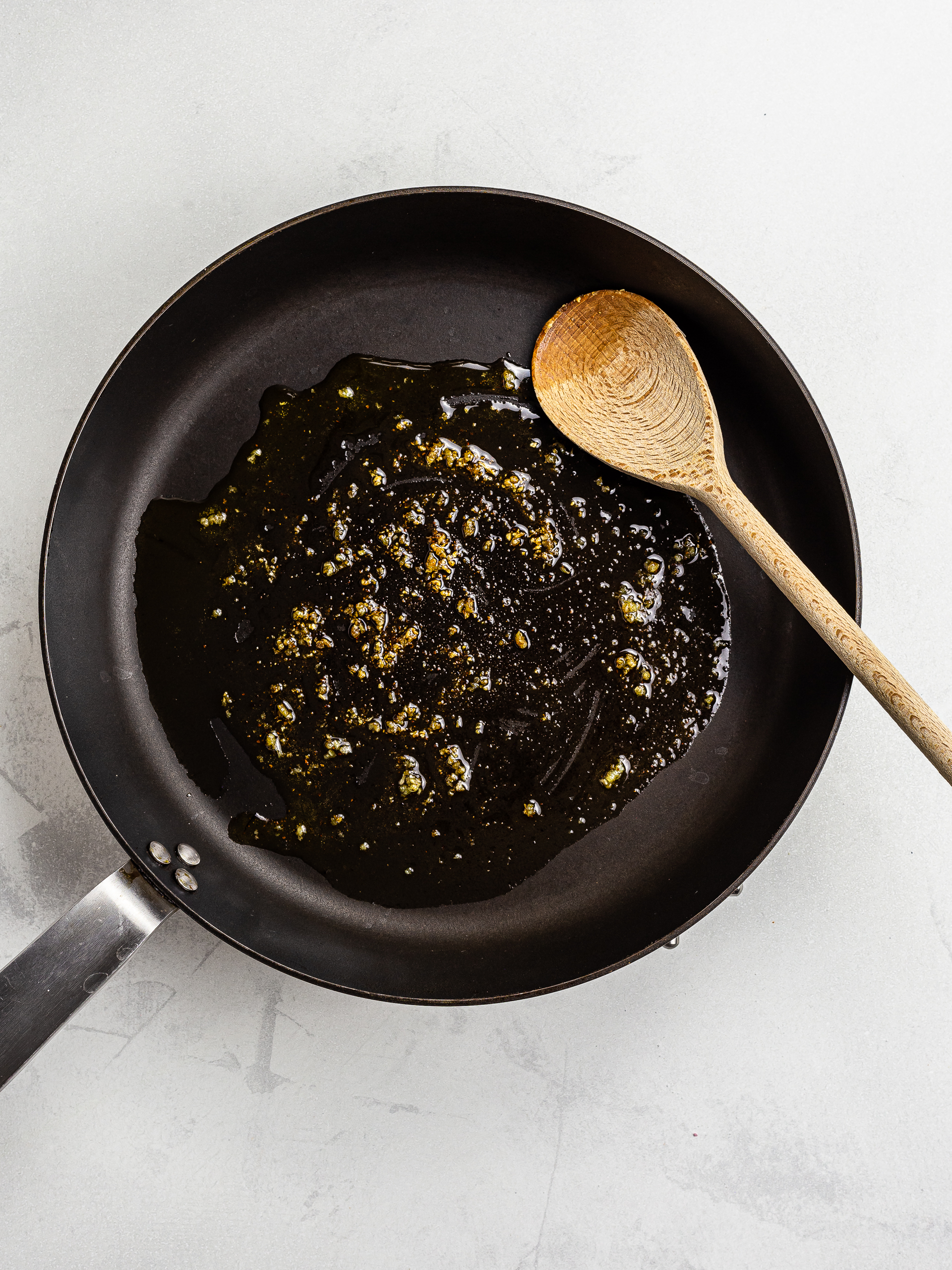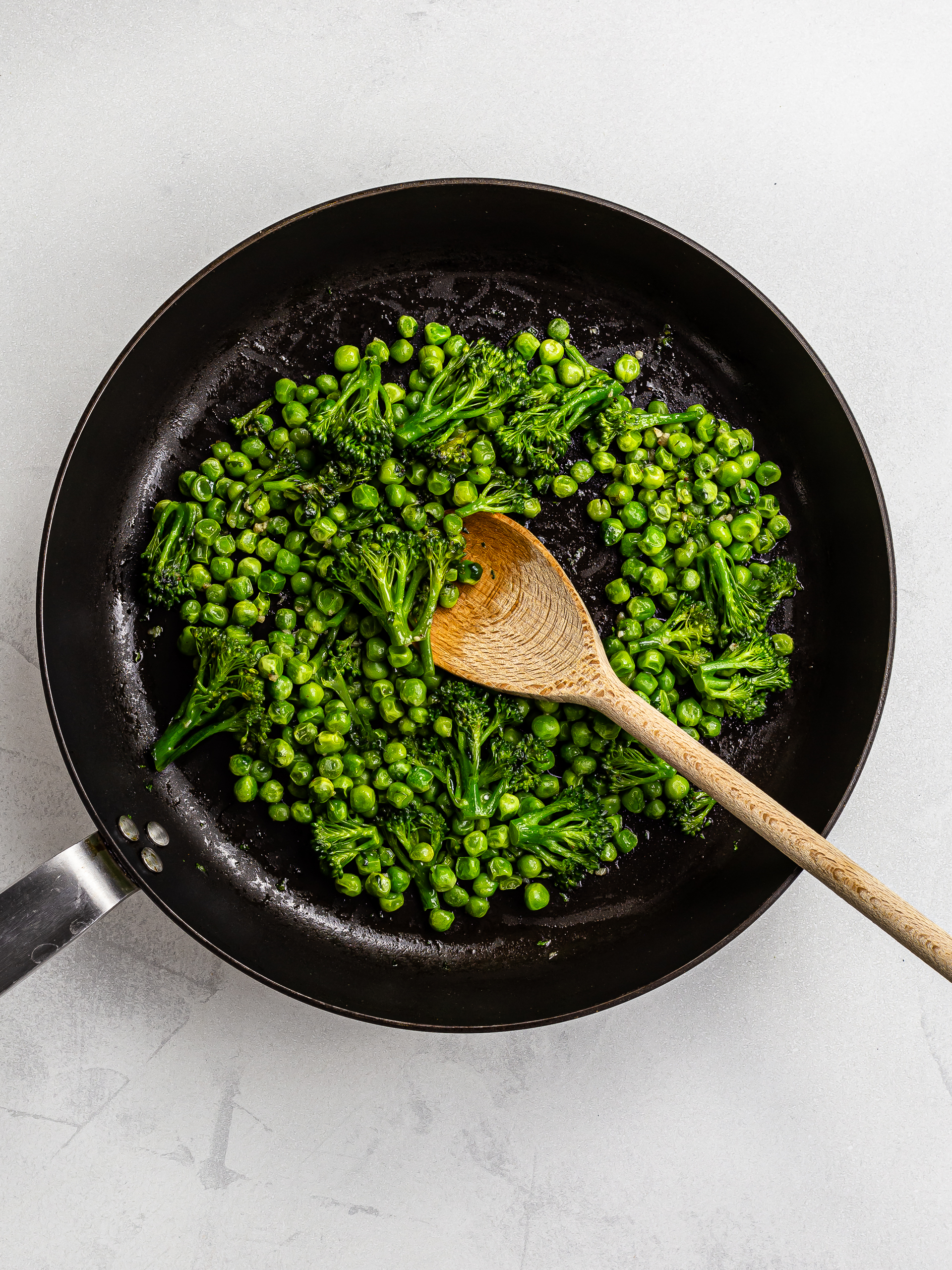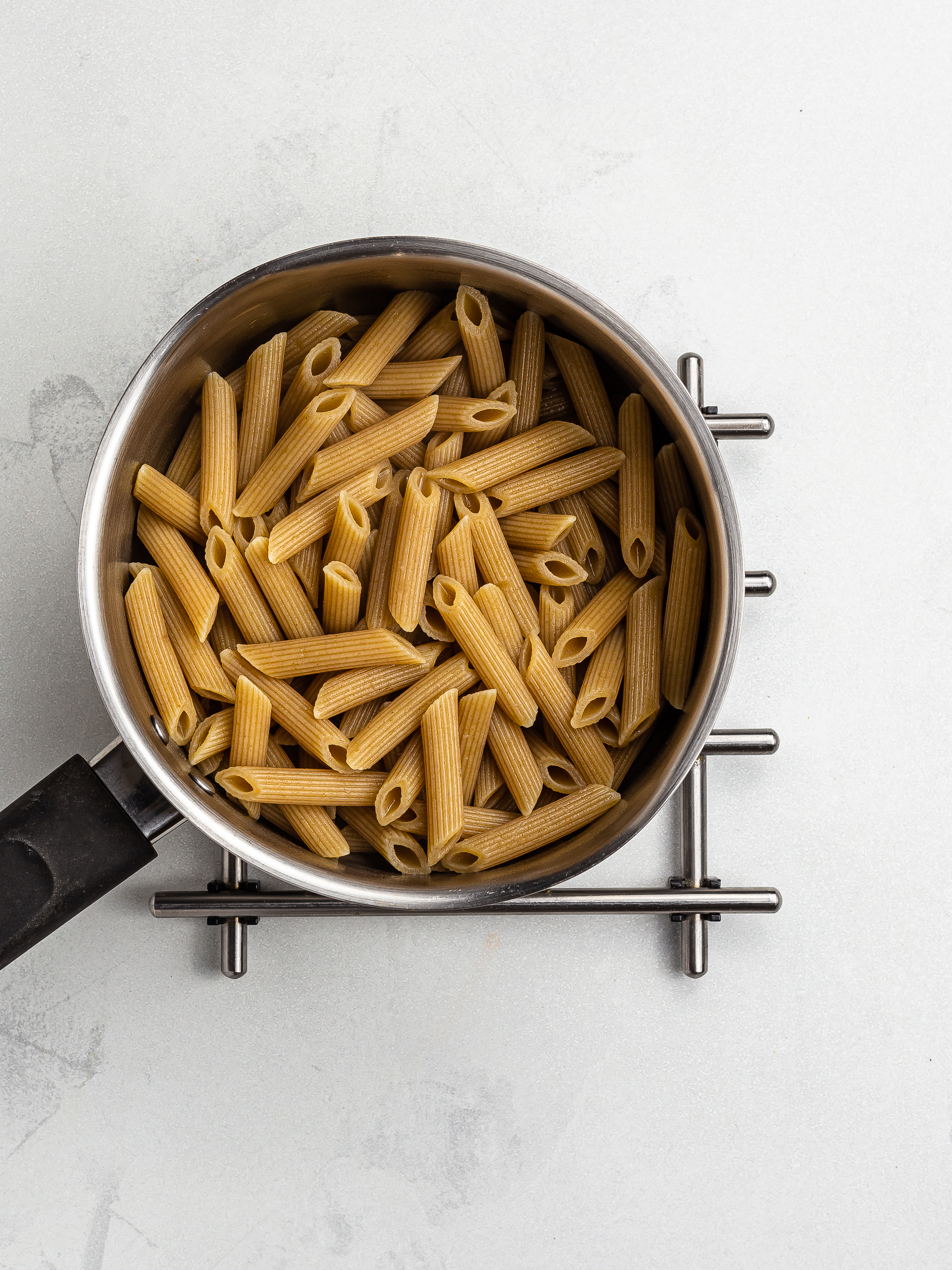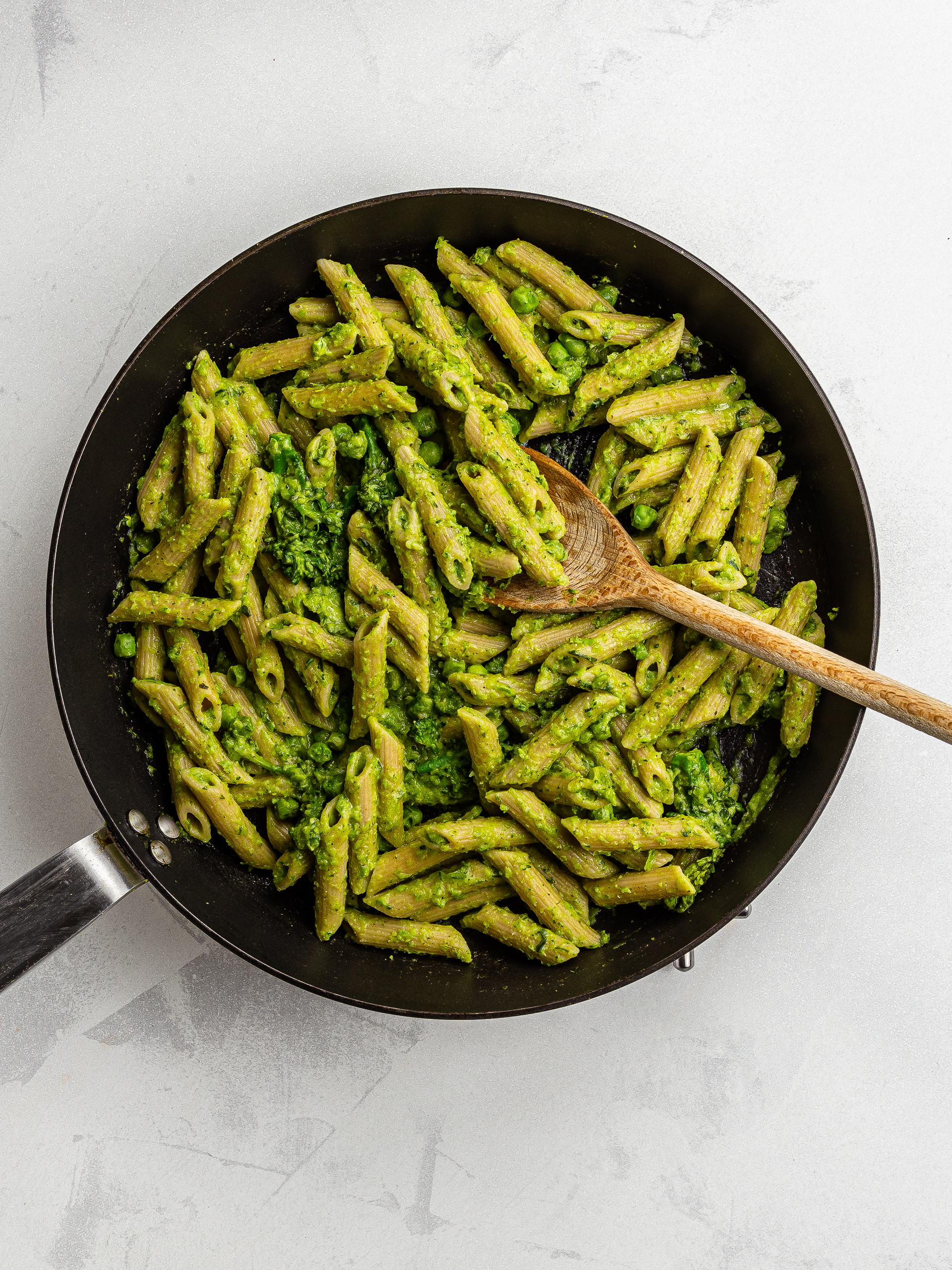In a few easy steps, you can prepare a deliciously creamy pasta dish with just two simple ingredients: green peas and broccoli. With their unique flavour and texture, these vegetables make a smooth and rich cream that goes wonderfully with pasta. Nutmeg and parsley complement the dish with their spicy and fresh aroma.
Thanks to the combination of peas, broccoli, and wholemeal pasta, this recipe is high in fibres, providing over 15 grams per serving, which covers 60% of your recommended daily intake.
Fibres make you feel full and satiated for longer as they delay the rate at which the foods you eat pass from the stomach to the guts. This way, they also slow down the stream of energy released from digested foods, reducing food cravings later on. Fibres are not just great to prevent overeating, keep a healthy weight, and aid weight loss, but they also help your entire digestive system work at its best.
Preparing a fibre-rich meal like this pea pasta is a simple and tasty way to add more fibres to your diet. When you swap regular pasta with whole wheat pasta, you're already consuming three times more fibres and 25% fewer net carbs. And when you pair it with legumes and vegetables like peas and broccoli, your fibre count skyrockets!
Moreover, a bowl of this pasta makes a well-balanced vegan meal with plenty of plant-based proteins, plus precious vitamin B12 from the nutritional yeast — all in less than 500 calories per serving.
And the good news is this pea pasta tastes great both hot and cold, meaning you could cook a big batch and save the leftovers for the next day. You could pack it in your lunch box with a few energy balls and a berry smoothie — meal prepping is sorted!
Ingredients
| Extra Virgin Olive Oil | 2 tbsp |
| Garlic Cloves | 2 |
| Nutmeg | 1/2 tsp |
| Peas | 320 g |
| Broccoli Florets | 300 g |
| Fresh Parsley | 4 tbsp |
| Whole Wheat Penne Pasta | 320 g |
| Nutritional Yeast (optional) | 4 tbsp |
Step 1
Heat the extra virgin olive oil in a skillet, and then add crushed garlic cloves and nutmeg.
Sizzle for a minute until the garlic is fragrant.

Step 2
Next, tip in the peas, broccoli florets, and finely chopped parsley.
Add a splash of water and cook the vegetables covered for 10 minutes until softened.
Then, season with salt and pepper to taste.

Step 3
Meanwhile, cook the pasta for 6-8 minutes in a pot of boiling water, or follow the packet instructions.
Taste the penne a minute before the end of cooking time to make sure the pasta is al dente (meaning cooked through but firm to the bite).
Then, drain the pasta with a colander saving 60 ml (1/4 of a cup) of the cooking water for the pea sauce.

Step 4
Now, transfer two-thirds of the cooked peas and broccoli into a food processor.
Tip the nutritional yeast, if you're using it, and blitz all until smooth and creamy.

Step 5
Finally, add both the cooked pasta and the pea mash to the skillet.
Pour in the reserved pasta cooking water and toss well.
You can serve this high-fibre pasta with a sprinkle of chilli flakes and toasted almond flakes if you fancy.

Tips
Other high-fibre ingredients you can use for pasta include vegetables like carrots, Brussels sprouts, green beans and kale or legumes like white beans and chickpeas. Try a mighty cannellini and green beans combo as in this vegan tofu pesto pasta!
